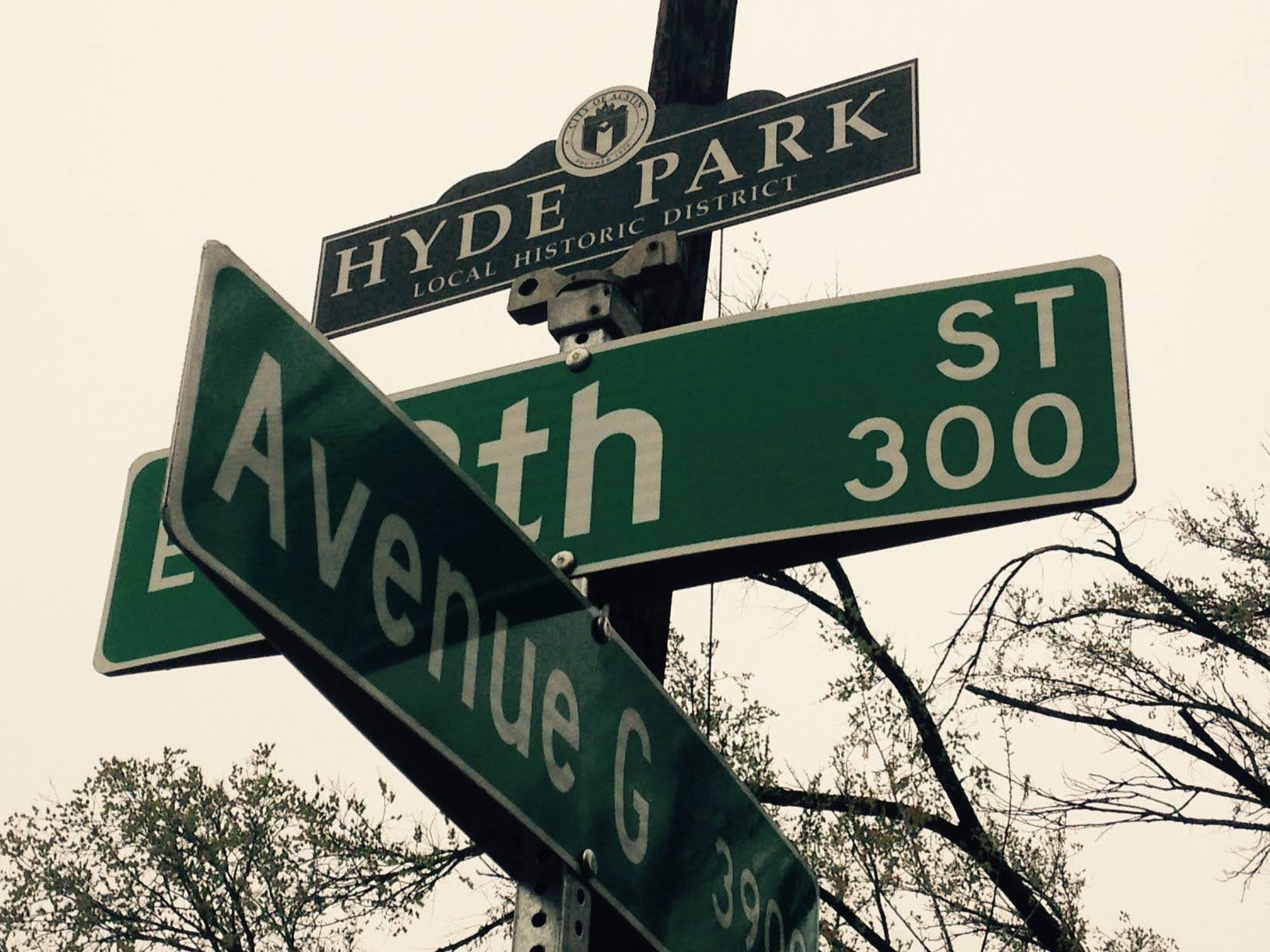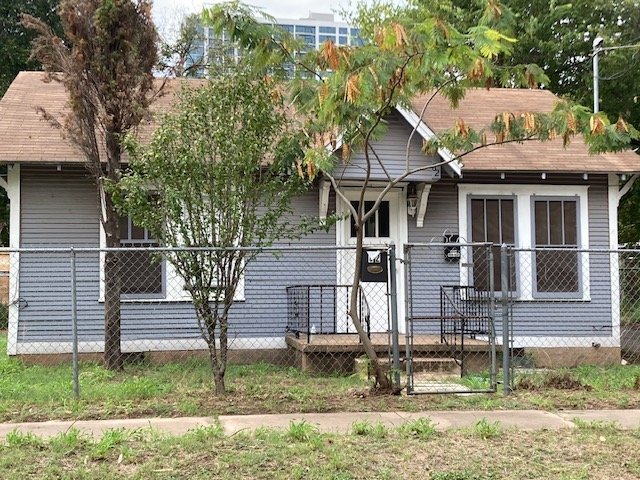Why Austin Needs Local Historic Districts
BY MARY KAHLE, PRESERVATION AUSTIN FALL 2021 POLICY INTERN
Austin has been losing its historic structures and resources at a rapid pace, compelling several questions around historic preservation. Why do we preserve certain structures and sites, and how do we make those decisions? What tools do we have to preserve them? In preservation, as in all things, nuance and context is key, and no two preservation situations are alike. Nevertheless, among the most powerful tools at the disposal of preservationists to combat demolition are local historic districts.
But what is a local historic district? How does it differ from other types of historic districts? And what makes it so powerful?
Part of the challenge of historic preservation lies in the technical jargon. While preservationists wield certain terms and concepts readily, many remain inscrutable to non-preservationists and create barriers for the general public to access these important and powerful tools. The various types of historic designation––federal, state, and local––contain critical differences in the types of protections and incentives that they provide, and understanding the difference is the first step in empowering property owners and neighborhoods in deciding which designations are right for them.
Federal Designation
Plaque to identify properties listed on the National Register of Historic Places
The National Register of Historic Places (NR) is a list of the nation’s important historic properties. Buildings can be listed in the NR individually or as a part of a historic district, but no zoning change is involved and historic review is advisory only. This designation is primarily honorific, but is important for applicable property owners seeking to access state and federal tax credits.
Under federal law, NR listing places no restrictions on what a non-federal owner may do with their property up to and including demolition, unless the property is involved in a project that receives federal assistance.
State Designation
Plaque to identify Recorded Texas Historic Landmarks.
Historic designation at the state level has two main categories, Recorded Texas Historic Landmarks (RTHL), and State Antiquities Landmarks (SAL). RTHL and SAL designations, under the oversight of the Texas Historical Commission (THC), cover historic structures and archeological resources on public and private land. These designations offer some protections but ultimately don’t prevent the alteration or destruction of the building or site. Like federal designation, state designation may qualify certain projects for historic tax credits.
Local Designation
Historic designation at the local level offers the strongest protection for properties and greatest benefit for older neighborhoods. Through a zoning process initiated by the Historic Landmark Commission, City of Austin Landmarks and Historic Districts are zoned as Historic. This zoning change is the critical strength of local historic designation, as it is the only tool that protects buildings from demolition, in addition to requiring design review for exterior alterations.
There are two options in the City of Austin: Historic Landmark designation, and Local Historic District (LHD) zoning.
Plaque to identify City of Austin Historic Landmarks.
LOCAL HISTORIC LANDMARKS
To obtain Historic Landmark designation, a building, cemetery, or other site must be fifty years old or older, retain historic integrity, and meet two of five criteria for significance. The HLC reviews and approves changes to the exterior or the site. Austin has over 600 individual landmarks.
LOCAL HISTORIC DISTRICTS
Local historic districts are composed of contiguous groups of buildings, sites, and parks, and requires architectural criteria similar to those of Historic Landmarks. To obtain LHD zoning, applicants must follow the historic district application guide. LHD zoning involves adding historic designation to the base zoning and requires the support of a majority of property owners or land area owners. As with historic landmark designation, the HLC reviews and approves changes to exteriors or sites. Austin has eight local historic districts.
In addition to demolition protection, local historic designation comes with certain tax benefits for owners of landmarks and contributing structures to local historic districts.
A recent case heard by the City of Austin’s Historic Landmark Commission (HLC) highlights some of the dilemmas and debates over historic districts, and in doing so reveals the strong need for and immense challenge of achieving local historic district designation in a city like Austin.
In November, a petition was discussed before the HLC to demolish two 1940s-era homes in East Austin’s Willow-Spence Streets National Register Historic District. Established as a National Register historic district in 1985 (Austin has eighteen NR districts), Willow-Spence and the surrounding neighborhood tell the story of the displacement of Mexican American residents from downtown toward East Austin in the early twentieth century, which intensified in the 1950s with the construction of I-35. The properties also tell the stories of Austin’s working class – its carpenters, grocers, sales clerks, and auto mechanics. In addition, the broader East Cesar Chavez neighborhood reflects the influences of the Mexican American, African American, and European American residents who have called the area home since the late nineteenth century.
Home located in the Willow-Spence National Register District.
The two houses in question are simple one-story, rectangular wood frame cottages, their gabled entries and decorative screens giving the street charm and character. They’re also in good shape and blend in well with the homes and buildings nearby, including businesses, churches, and schools, making their location walkable and inviting. The houses are located close to Capitol Metro bus routes and lie within the city’s ADA (Americans with Disabilities Act) Corridor, priorities under the City’s housing strategy.
Given these factors, these houses should be a high priority for preservation under the city’s stated goals of providing affordable housing in established communities, mitigating the displacement of communities of color, and maintaining neighborhood character in the face of gentrification. The demolition of these two houses would be the first since the neighborhood’s designation as a National Register district, opening the door to further demolitions in the neighborhood.
The Rogers-Bell House, located in the Robertson/Stuart & Mair Local Historic District.
But there are obstacles. While a city process to designate them individual historic landmarks is a possibility, documentation on their original siting and ownership is patchy. It’s also difficult to determine whether they’re historically significant through the people or events they’ve sheltered. These factors make it challenging to argue for historic landmark designation, because it carries a higher threshold of significance than if the building were a contributor to a local historic district. The owner could embark on some type of adaptive reuse or relocate them, as the HLC recommended, but such recommendations are not enforceable.
In the case of the Willow-Spence houses, city staff and HLC members expressed the desire to see the neighborhood pursue LHD designation. Based on the City’s review process, this would protect not just the two houses on San Marcos Street but the other structures within the designated historic district, protecting a character-rich neighborhood on the edge of an ever-expanding downtown. LHD zoning would preserve the area’s unique story and diversity and create an opportunity for longtime residents to remain in place.
The Kirk House, located in the Rogers-Washington-Holy Cross Local Historic District (Photo by Lauren Kerr)
While this sounds all well and good, there is a reason Austin has only eight local historic districts to date. As noted, the support of a majority of property owners is required for a petition for an LHD to be heard by the HLC. This can be problematic, as seen in the case of the Clarksville neighborhood, where economic and other concerns collided with preservation goals and many homeowners stood in opposition to becoming an LHD. Furthermore, the time, effort, and expense required to pursue designation creates serious obstacles for all neighborhoods. This is most acutely felt in lower income neighborhoods, which often have fewer resources and a greater need for the benefits and protections of designation. At a time when Austin is facing an affordability crisis, the debate over historic preservation’s role in the equation is heightening.
Adding to the complexity is a recent rule change by the Texas Legislature requiring a supermajority (9 votes) of the HLC or the City’s Planning Commission if even one owner in a proposed LHD is opposed to their property’s inclusion in the district. In effect, this means that virtually every future historic district will be subject to this exceedingly stringent voting threshold, creating even greater barriers to access an already challenging process. Only two of the City’s eight LHDs are located in East Austin’s historically African American and Mexican-American neighborhoods, which experience some of the highest rates of demolition and displacement citywide. Given this urgency, it is essential that Austin’s preservation community find the tools and political will to meet these challenges and create greater accessibility to local historic districts for all.
MARY KAHLE IS PRESERVATION AUSTIN’S FALL 2021 POLICY INTERN. SHE IS A GRADUATE STUDENT IN PUBLIC HISTORY AT TEXAS STATE UNIVERSITY.







